Acrylic paint offers vibrant colors and versatility when it comes to creating designs on fabric. However, to ensure that your artwork remains vibrant and durable over time, it is essential to properly seal the acrylic paint.
Sealing not only protects the paint from fading or washing off but also enhances its resistance to wear and tear. So, how to seal acrylic paint on fabric? In this guide, we will explore effective techniques and products to seal acrylic paint on fabric.
Whether you’re a seasoned artist or a DIY enthusiast, this guide will provide you with valuable tips and step-by-step instructions to help you achieve long-lasting and professional-looking results.
From choosing the right sealant for your specific fabric and design to preparing the fabric surface and applying the sealant correctly, we’ll cover everything you need to know to preserve your acrylic paint designs on fabric for years to come.
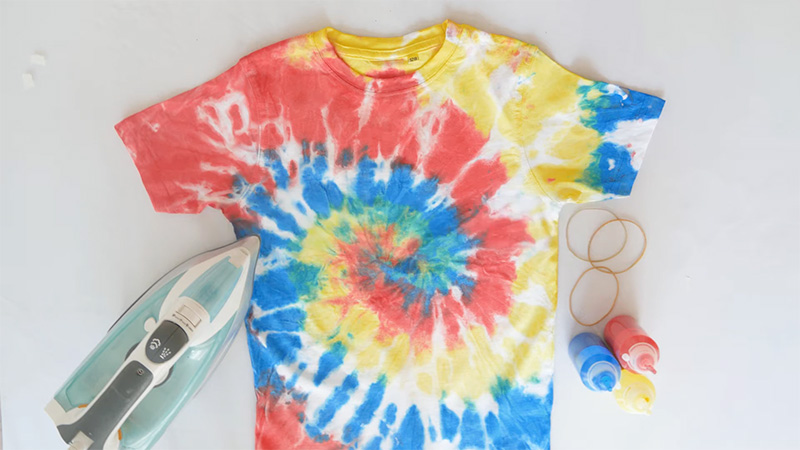
How to Seal Acrylic Paint on Fabric? 4 Steps
Sealing acrylic paint on fabric is an important step to ensure the longevity and durability of your artwork. By sealing the paint, you can protect it from fading.
It also prevents cracking, and peeling, and make it more resistant to washing and general wear and tear. Here’s a step-by-step process on how to seal acrylic paint on fabric.
Materials to Collect
Before you begin, gather the following materials: Choose high-quality acrylic paint specifically designed for fabric. These paints are formulated to adhere well to fabric and withstand washing.
Fabric medium is an additive that helps to improve the flexibility and adhesion of acrylic paint on fabric. It also prevents the paint from becoming stiff and cracking. Use synthetic brushes that are suitable for acrylic paint.
Select a fabric that is suitable for your project. Natural fibers like cotton and linen tend to work best with acrylic paint. Use a palette or a mixing tray to mix your paint colors and fabric medium.
Step 1: Prepare your fabric
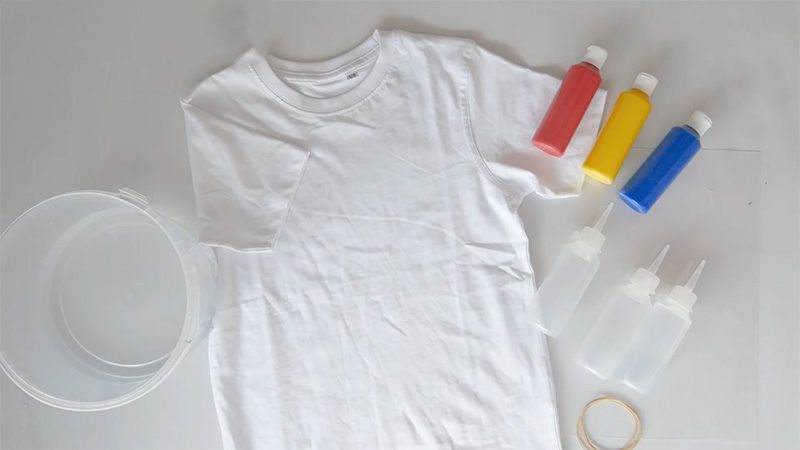
Start by washing and drying your fabric to remove any dirt, chemicals, or sizing agents that may interfere with the adhesion of the paint. Iron the fabric to remove any wrinkles.
In a palette or mixing tray, mix your acrylic paint colors with the fabric medium. Follow the instructions on the fabric medium bottle for the correct ratio. Typically, you’ll mix one part fabric medium with two parts acrylic paint.
Step 2: Apply the paint
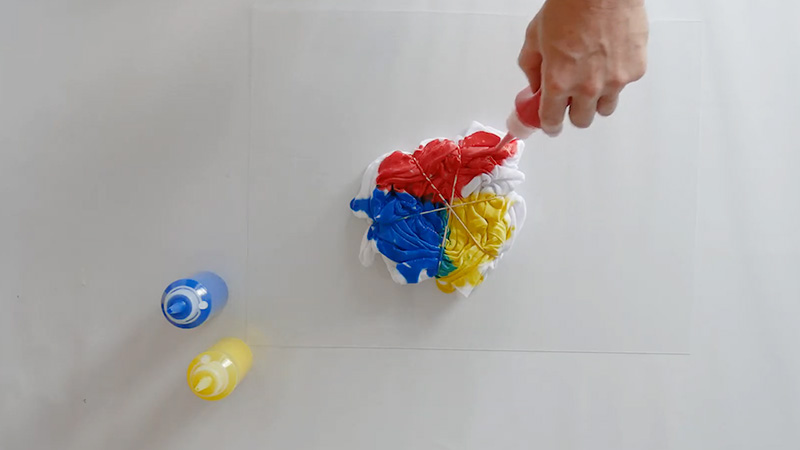
Using your paintbrush, apply the acrylic paint mixture to the fabric. Start with light, even strokes, and gradually build up the layers as needed. Allow each layer to dry before applying the next one.
If you’re using heat-setting as your sealing method, follow the instructions on the fabric medium bottle for heat-setting.
Typically, this involves ironing the painted fabric on the reverse side for a specific duration at a recommended temperature. Heat-setting helps to bond the paint to the fabric fibers.
Step 3: Choose your sealing method
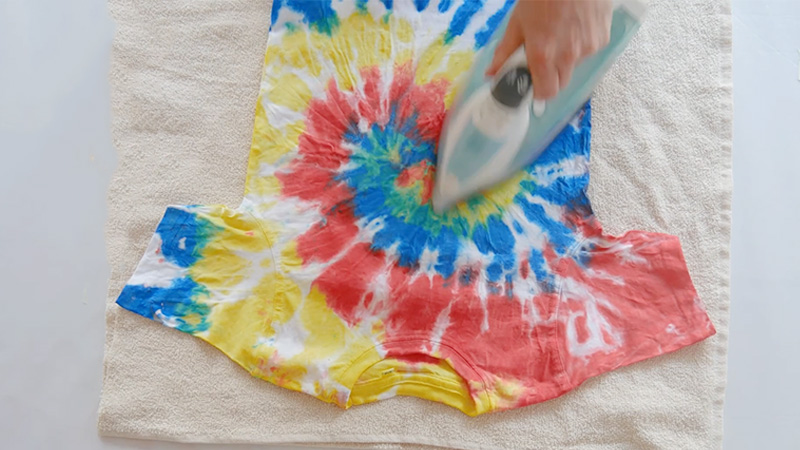
There are different options for sealing acrylic paint on fabric. Fabric sealers and fabric varnishes are available in spray or brush-on forms. Follow the instructions on the product for the best results.
Apply the sealer or varnish in thin, even coats, allowing each coat to dry before applying the next one. This will help to create a protective barrier over the paint.
Step 4: Let it cure
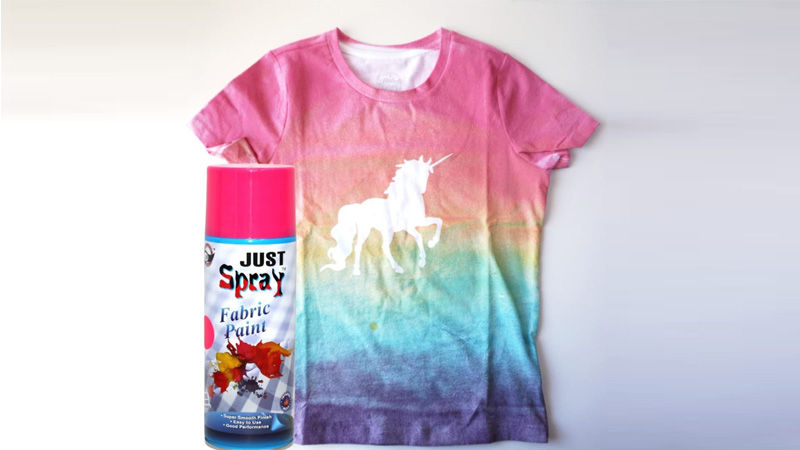
After sealing, allow your painted fabric to cure for the recommended time. This will ensure that the paint and sealer fully bond with the fabric.
To maintain the longevity of your painted fabric, follow the care instructions provided by the fabric medium and sealer manufacturers.
Generally, it is recommended to wash the fabric inside out on a gentle cycle with mild detergent. Avoid using bleach or harsh chemicals, as they can damage the paint.
By following these steps, you can successfully seal acrylic paint on fabric and enjoy your artwork for years to come. Remember to experiment and have fun with different techniques and designs to create unique and personalized fabric creations.
Reasons to Seal the Acrylic Paint on the Material
Sealing acrylic paint on fabric offers several benefits that contribute to the longevity and durability of your artwork. Here are some detailed reasons why you should consider sealing acrylic paint on fabric:
Protection Against Fading
Acrylic paint contains pigments that can fade over time when exposed to sunlight or harsh environmental conditions. Sealing the paint creates a protective barrier that helps to prevent UV rays from reaching the paint, reducing the risk of fading and preserving the vibrancy of the colors.
Prevention of Cracking and Peeling
Acrylic paint can become brittle and crack or peel when exposed to repeated washing, stretching, or general wear and tear. Sealing the paint helps to improve its flexibility and adhesion to the fabric, reducing the likelihood of cracking or peeling.
Increased Resistance to Washing
Sealing acrylic paint on fabric makes it more resistant to washing. It helps to protect the paint from being washed away or fading when the fabric is laundered. This is particularly important for items like clothing, bags, or home decor items that may require regular washing.
Enhanced Durability
Sealing the paint creates a protective layer that adds durability to the fabric. It helps to prevent the paint from flaking or chipping off, making your artwork more resistant to damage caused by friction, abrasion, or handling.
Improved Water Resistance
Acrylic paint is water-based, which means it can be susceptible to water damage. Sealing the paint on fabric helps to make it more water-resistant, reducing the risk of the paint bleeding or running when exposed to moisture.
This is especially important for items that may come into contact with water, such as outdoor cushions or tablecloths.
Ease of Maintenance
Sealed acrylic paint on fabric is easier to clean and maintain. The protective barrier created by the sealer helps to repel dirt, stains, and spills, making it easier to wipe or spot clean the fabric without damaging the paint.
Longevity of the Artwork
By sealing acrylic paint on fabric, you can extend the lifespan of your artwork. The sealer helps to protect the paint from environmental factors, such as dust, dirt, humidity, and pollutants, which can degrade the paint over time. This ensures that your artwork remains vibrant and intact.
Versatility
Sealing acrylic paint on fabric allows you to work with a wider range of fabric choices. While natural fibers like cotton and linen tend to work best with acrylic paint, sealing the paint can also make it adhere well to synthetic fabrics, such as polyester or nylon.
Professional Finish
Sealing acrylic paint on fabric gives your artwork a professional and finished look. It helps to smooth out the texture of the paint, giving it a more even and polished appearance. This is particularly important if you plan to display or showcase your artwork.
Customization and Personalization
Sealing acrylic paint on fabric allows you to customize and personalize your fabric creations. Whether you’re painting designs, patterns, or images, sealing the paint ensures that your artwork remains intact and vibrant, reflecting your unique style and creativity.
How to Choose the Right Sealant for Fabric?
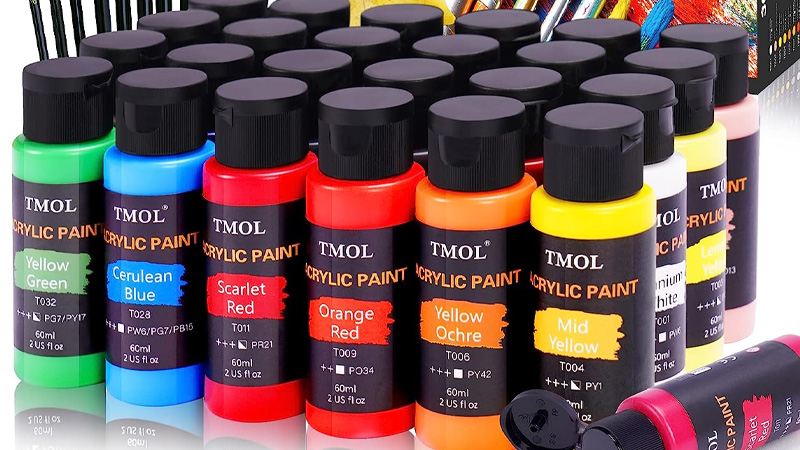
Choosing the right sealant for fabric depends on various factors such as the type of fabric, the desired finish, and the intended use of the fabric. Here are some considerations to help you choose the appropriate sealant for your fabric:
Fabric Type
Consider the type of fabric you are working with. Different sealants may work better on certain fabric types. For example, some sealants may be more suitable for natural fibers like cotton or linen, while others may work better on synthetic fabrics like polyester or nylon.
Read the product labels or consult the manufacturer’s recommendations to ensure compatibility with your fabric.
Desired Finish
Determine the finish you want to achieve. Some sealants provide a glossy finish, while others offer a matte or satin finish. Consider the overall look you want for your fabric artwork and choose a sealant that will complement your desired aesthetic.
Application Method
Consider the ease of application and the method that works best for you. Sealants are available in various forms, including spray-on, brush-on, or dip-on. Choose a sealant that aligns with your preferred application method and ensures even coverage on your fabric.
Durability and Washability
Assess the durability and washability requirements of your fabric. If you are working on items that will be frequently washed or exposed to moisture, such as clothing or accessories, opt for a sealant that offers good resistance to washing and water.
Compatibility with Acrylic Paint
Ensure that the sealant is compatible with acrylic paint. Some sealants are specifically formulated for use with acrylic paint and provide better adhesion and protection.
Check the product labels or consult the manufacturer’s recommendations to confirm compatibility.
Odor and Toxicity
Consider the odor and toxicity levels of the sealant, especially if you are working in an enclosed space or have sensitivities to certain chemicals. Look for sealants that are low in odor and non-toxic, or choose water-based sealants that are generally safer to use.
Testing and Reviews
Before committing to a specific sealant, consider conducting a small test on a scrap piece of fabric or an inconspicuous area to assess the compatibility, finish, and durability of the sealant.
Additionally, read reviews or seek recommendations from other artists or crafters who have experience with sealing acrylic paint on fabric.
Manufacturer’s Instructions
Always follow the manufacturer’s instructions and recommendations for the sealant you choose. Each sealant may have specific application guidelines, drying times, and curing requirements.
Adhering to these instructions will ensure the best results and longevity of your sealed acrylic paint on fabric. Remember, it’s important to choose a sealant that suits your specific needs and preferences.
By considering factors such as fabric type, desired finish, durability, and compatibility, you can select the right sealant to protect and enhance your acrylic paint on fabric artwork.
FAQs
Can I use regular acrylic paint without a fabric medium to paint on fabric?
While regular acrylic paint can adhere to fabric, it may not be as durable or flexible as when used with a fabric medium. The fabric medium helps to improve adhesion, flexibility, and washability of the paint on fabric.
Can I use a regular varnish or sealer for sealing acrylic paint on fabric?
Using a regular varnish or sealer designed for other surfaces may not provide the best results on fabric. It is recommended to use sealants or varnishes specifically formulated for fabric.
These products are designed to be flexible, washable, and compatible with acrylic paint on fabric.
How many coats of sealant should I apply to my fabric artwork?
The number of coats of sealant depends on the specific product and the desired level of protection. Generally, it is recommended to apply multiple thin coats rather than one thick coat.
Start with a thin, even coat and allow it to dry completely before applying additional coats.
Can I heat-set acrylic paint on fabric instead of using a sealant?
Heat-setting is an alternative method to seal acrylic paint on fabric. It involves using heat, typically by ironing the painted fabric, to bond the paint to the fabric fibers. While heat-setting can provide good adhesion and durability, it may not offer the same level of protection as a sealant.
How should I care for fabric artwork sealed with acrylic paint?
To care for fabric artwork sealed with acrylic paint, follow the care instructions provided by the fabric medium and sealant manufacturers. Generally, it is recommended to wash the fabric inside out on a gentle cycle with mild detergent.
Conclusion
Sealing acrylic paint on fabric is a crucial step in preserving the vibrancy and longevity of your artwork. By following the techniques and tips outlined in this guide, you can ensure that your acrylic paint designs on fabric remain vibrant and resistant to fading.
Remember to choose the right sealant for your specific fabric and design, as different sealants may offer different levels of protection and finishes. Properly preparing the fabric surface and applying the sealant in thin, even layers will help achieve optimal results.
Sealing your acrylic paint on fabric not only protects your artwork from the elements but also enhances its resistance to wear and tear, making it suitable for various fabric projects such as clothing, accessories, and home decor items.
With the knowledge and guidance provided in this guide, you can confidently seal your acrylic paint on fabric and enjoy the satisfaction of creating long-lasting, professional-looking designs.
Leave a Reply